
Abstracts
School: Global, Urban and Social Studies
Presentation: Confirmation of Candidature
Title: Securitizing Public Space and Socio-Spatial Disorder Case Study: Makassar, Indonesia
Abstract: The issue of urban security has gained considerable relevance in urbanization and global agendas, particularly in developing countries. Communities engage in the act of securitizing their spaces due to the presence of social disorder that threatens perceived safety. Simultaneously, social disorder emerges because of spatial conflicts in the pursuit of securing public areas. The interplay of individuals and government between securitizing spaces and social disorder establishes a cyclical cause-and-effect relationship that influences both formal and informal areas. This is particularly relevant in Makassar, Indonesia which has been stigmatized as the 'riot city' since the era of the New Order (1965-1998) and amplified by social media. Recognizing the typology of public spaces as arenas of contestation for securitizing space, the patterns and motives underlying socio-spatial disorder, such as inter-community conflict, land privatization, and urbanization issues, is imperative from the standpoint of the community and governmental entities.
The distinctive characteristics of public spaces in Indonesia, especially in Makassar, differ from the general perceptions through Western and Eastern lenses. The research aim is to investigate community and government involvement in modifying public spaces to enhance security, leading to recommendations for the urban planning policies of the functionality of public space. This research is a case study with an interpretivist approach. The method includes interviews, focus groups, and observation integrated with spatial analysis. Recommendations for public policy in urban planning will be provided in archetype methods as scenario simulations of the future public spaces and in responses to social disorder.
Image credit: Khilda Nur
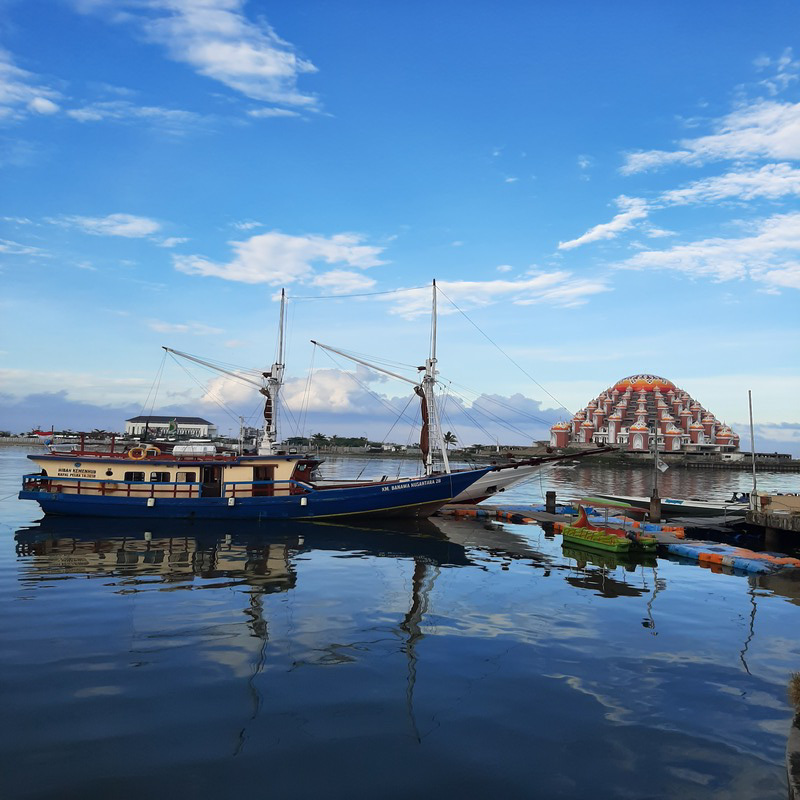
School: Media and Communication
Presentation: Confirmation of Candidature
Title: The Role of Museum Interactives in Developing Digital Literacies
Abstract: Museums worldwide have faced increasing pressure since the 1980s to demonstrate the positive and tangible impacts they have on their visitors and local communities (Scott, 2003). Of these, educational outcomes are often of especially significant interest (Hooper-Greenhill, 2007; Jacobsen, 2016). Though museum learning has been an active area of research since the 20th century, the present-day proliferation of technology-enabled interpretive tools offers us new ways of learning from museum collections. But to what effect? My PhD research topic seeks to assess the educational outcomes of a new generation of digital museum interactives. Where previous research on learning in museums has tended to emphasise subject-matter and/or social learning, my work will focus on how new tools can also serve to enhance digital skills and literacies. I will take a mixed-methods approach to researching this subject. Three participant groups will be recruited as part of my data collection efforts: (1) the professional producers of museum interactives and digital content (2) 18–25-year-olds, and (3) adults aged 60+. The Australian Centre for Moving Image will serve as the primary study site.
Image credit: © Julio Nery
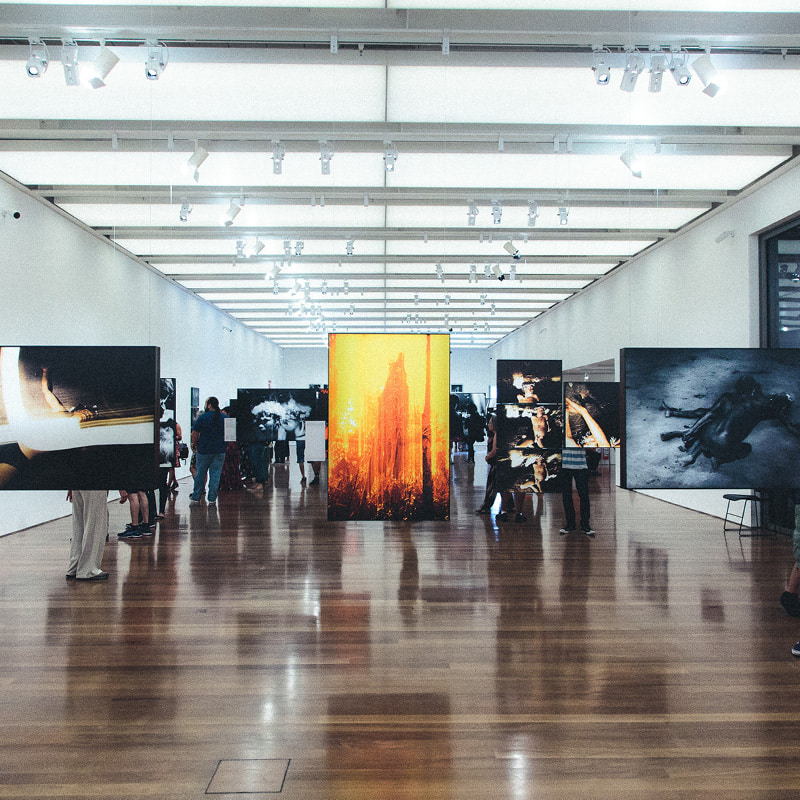
School: Education
Presentation: Third Milestone Review
Title: An exploration of Victorian kindergarten educators’ experiences of remote teaching during COVID-19
Abstract: COVID-19 changed the pedagogical expectations of early childhood education as many educators across Australia had to quickly adapt to remote teaching. Remote teaching, designed for children who were unable to attend in-person learning, posed challenges particularly for kindergarten or pre-school educators in Australia because they had to support play-based learning online. However, there is a dearth of literature regarding the remote teaching practice of kindergarten educators in Australia. Kindergarten education typically encompasses children aged between 3 to 5 years, forming part of the broader spectrum of early childhood education which encompasses educational services provided to children from birth to year eight. As Victorian kindergarten educators experienced the longest lockdown in Australia and thereby possess valuable insights into the experiences of remote teaching, this study aims explore Victorian kindergarten educators’ experiences of remote teaching during COVID-19. Data was collected from a sample of kindergarten educators in Victoria and semi-structured interviews were conducted via Microsoft Team. Constructivist grounded theory methodology was used to analyse the data. Initial research results suggest changing expectations of educators’ roles and responsibilities during lockdown with a significant theme related to transitioning educator identities. The concept of transitioning represents the shift from the role of educator to organiser, innovative online educator, liaison, essential worker, social worker and working mother. The findings illustrate the complexity of kindergarten educators’ roles during the pandemic. Recommendations resulting from this study can contribute to further developing response and support measures for kindergarten educators in case of future emergency.

School: Global, Urban and Social Studies
Presentation: Confirmation of Candidature
Title: An inquiry into a relational understanding of young Australian men’s conceptions of fathering
Abstract: For approximately the last 40 years the study of fathering has attempted to understand the nature of fathering and the role of fathers. However, the study of the relational nature of fathering and its influence on their sense of self from the perspective of fathers themselves is still in its infancy. Whilst much has been written about mothering and the influence of mothers on their children there has not been an equivalent recognition of the role fathering plays in relationship to their children. Much of the sociological and philosophical research on fathering that there is has relied on certain premises based on individualist, constructivist, essentialist and dualist frameworks designed with an epistemological focus on knowing and categorising. These categorisations of fathers refer to a set of traits, often set in opposition to the traits said to define femininity and mothering, and constructed through lens focussed of the binary and unequal nature of social structures and gender differences. In my research I aim to address the gap by understanding the materialities of fathering as practices and relationships. The method and approach is designed to address the ontological nature of fathering through a new materialist framework whilst combining this with an ethnographic study of 10 fathers to understand how they have made meaning of their relationships. This research will provide a new way of engaging in the research of fathering based on relationships not on categorisation.

School: Education
Presentation: Confirmation of Candidature
Title: Investigating the impact of Intentional Teaching Gestures on student oral production and student attitudes in the French as an additional language classroom.
Abstract: Encouraging student oral production is of paramount importance in an additional language [AL], not only for language development, but for encouraging students to learn the AL through interaction and discussion. Further, student attitudes can play a large role in students’ willingness to communicate and participate in the AL classroom. Consequently, the consideration of how to promote positive student attitudes and student oral production in the AL classroom constitutes a compelling topic. This paper proposes research concerning Intentional Teaching Gestures [ITG] and their impact on student oral production and student attitudes in the French as an additional language [AL] classroom. While previous research has outlined the efficacy of using ITG, this research consolidates these findings by adding both a new context and a new ITG methodology and including the consideration of student attitudes. This mixed-methods research considers a case study in a primary school setting. Teachers of French will conduct two language production tasks one-on-one with their Prep to Year 6 students. In one task, teachers will use ITG scaffolds, for the other, verbal scaffolds. Both qualitative and quantitative data will be collected on both teacher and student use of gesture and use of language. Follow up interviews will gather qualitative data on student attitudes and reactions to both verbal and ITG scaffolding. Future findings may concern pedagogical implications for teaching ALs using ITG in the primary school setting.
Image credit: © pololia

School: Global, Urban and Social Studies
Presentation: Confirmation of Candidature
Title: Systemic Risk Assessment Framework for Urban Health Policies in a Changing Climate
Abstract: As complex systems, urban areas deal with contested agendas born out of the interplay of their physical, social, economic and cultural factors. The field of urban health, defined as the health of residents determined by the urban environment they live in, and its associated policies have been grappling with conflicting themes and inadequate or adverse outcomes as well. Direct and indirect effects of climate change are exacerbating the existing health problems in urban areas. This research takes a systemic and holistic approach to urban health and brings the two existing scholarly fields of urban health and climate resilience together.
In line with its theoretical approach, which is considering urban areas as complex sociotechnical systems, this study conceives of urban health and “water resilience” as emergent properties of complex urban areas, emerging out of the interaction of the components of their systems and their interdependencies, trade-offs and feedback loops of with broader urban context.
Using work domain analysis, causal loop diagrams and knowledge co-production within a case study, the research aims to conceptualize what a healthy and water resilient urban area is, what components contribute to it and how they are interrelated with the broader urban context. The research also explores how this conceptualization can be used as the basis of a risk assessment framework for the systemic risks associated with decisions, simultaneously moving towards risk-informed urban development as one of the main pillars of fostering climate resilience, and the realization of health in all policies (HiAP) approach, by building on co-benefits and dealing with potential points of conflict.
Image credit: GenAI avrezn

School: Global, Urban and Social Studies
Presentation: Second Milestone Review
Title: Translators as Ear Witnesses: Towards Best Practice in Forensic Translation and Transcription
Abstract: Forensic translation is the task of translating audio recordings, that are used for evidentiary purposes in a wide range of criminal cases.
In monolingual cases, transcripts of forensic speech evidence play an integral role in the legal system. However, when the audio recordings contain Languages Other Than English and they are used in legal proceedings as evidence, the speech interaction needs to be translated into English, therefore T&I practitioners are engaged to carry out the translation process.
In practice, translating poor quality audios into English is a complex, dynamic, and intersystemic process, which goes beyond the linguistic level. The challenging task is compounded by the lack of available training for T&I practitioners to learn how to undertake such tasks as well as the absence of work protocols and guidelines provided by law enforcement using the T&I services.
The best practice method recommended by the National Association of Judiciary Interpreters and Translators for FTT tasks involves a two-step process, yet its applicability to Australian context has not been tested. This research analyses the effectiveness and limitations of the recommended two step and the commonly used direct translation approaches and their impact on the way evidentiary audio recordings are transferred into English.
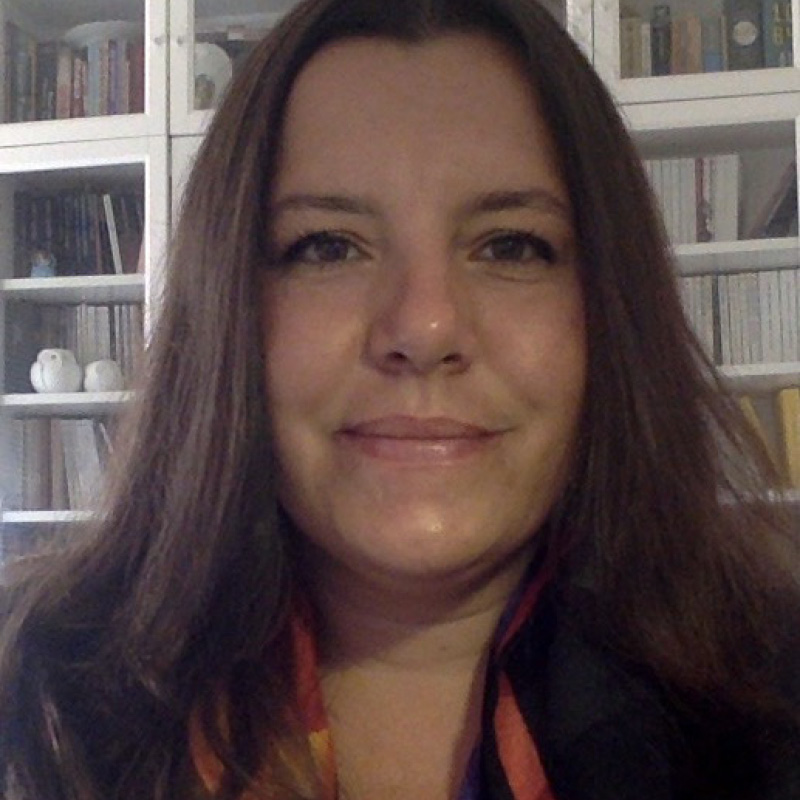
School: Media and Communication
Presentation: Confirmation of Candidature
Title: Mexican Jazz Ecology and the Internet: An Ecological and Comparative Approach to a Niche in the Digital Era
Abstract: Jazz in Mexico is experiencing an anomalous boom that began in the decade of 2010-2019. Not only has the demand for this genre grown, but the supply increased, generating in some areas, such as festivals, a deflationary situation (around 51 new jazz festivals emerged). This research will reflect on the key transformation derived from the digitalization of the Mexican jazz ecology, fostered by the Internet, in order to comprehend what have been the main implications of this new hybrid reality (analog-digital). For this purpose, I will draw on the ‘ecological’ model provided in the Sustainable Futures for Music Cultures project (Schippers and Grant 2016) and review the impact of the Internet through five domains proposed by the authors. Likewise, under a comparative case study, this project will examine the situation of the Mexican jazz ecology in the decade 2010-2019 with the decade 1990-1999 (pre-Internet era), which witnessed the consolidation of the industrial music market, also known as “hit system”, and from which Mexican jazz was systematically excluded.
Image credit: Still from Super8 film

School: Media and Communication
Presentation: Confirmation of Candidature
Title: Australian Ecstasy
Abstract: Australian Ecstasy is a braided writing project that treats writing like a party; a party being an event you attend in search of something… something inchoate and yet precise: a good feeling— what I am calling in the course of this research ‘the ecstatic’. I am assuming there to be multiple and elusive facets of the Australian ecstatic to explore, from religious ecstasy, mystical poetry, to party drugs and beyond. The ecstatic I am after is produced in relation to others, and may be produced, sought, or recorded in writing. In treating writing like a party, a ‘party methodology’ will be employed, developed in response to the felt shortcomings of ‘party theory’ and the representations of parties in narrative texts studied in the early stages of this project. The predominant aspect of the party methodology for my creative writing is the pursuit of ecstasy in writing; additional or secondary moods/affects foregrounded in the writing are play, anxiety, stupidity, artlessness, sociality, pleasure, flirtation, charm. Australian Ecstasy is conceived as a long essay written into the permissive space of hybrid creative nonfiction and fictocriticism ‘in pursuit’ of ecstatic literature and everyday ecstatic feeling. The (faux?) naivety of the project’s maybe-chimerical research object, and the performative pursuit thereof will be an original contribution to research and to contemporary Australian publishing. Potential secondary contributions of this project will be to draw out and extend ecstatic ‘threads’ in Australian literature that I find along the way, and in traditions I have identified so far.

School: Media and Communication
Presentation: Third Milestone Review
Title: Bodies Beyond the Skin: Imagining Queer Landscape Photography
Abstract: This practice-led research project investigates how landscape photography has privileged hierarchical masculinist (idealist) assumptions and seeks to problematise this schema by using ‘queer’ and camp methodologies and practices to betray, pervert, fail and ultimately un-settle existing narratives of Australian landscape photography. Photography has historically assisted the colonial project through the capture, categorisation and conceptualisation of ecologies as ‘space’. If photography and visual representations of the land contribute to the colonial systems, then how can practitioners work their way out of this entanglement? Can photography — a colonising practice — be used to unsettle narratives and visual representations of the Australian landscape through a practice of queering? To answer these questions, this research project presents a constellation of creative and written works that were conceived through generative cycles of making, research and reflection via a queer praxis methodology. In this project I interrogate settler visions of ‘nature’ and employ the concept of ‘queering’ as a methodology for unsettling the formulations of the Australian landscape through a range of photographic practices, including photobooks, video, sculpture and installation. Through an expansive range of image-based creative works, this practice-led PhD contributes to the field of photography through its coalescence of queer and postcolonial theory alongside landscape and photography studies bring forth new experimental ways of seeing and conceptualising ‘nature’ and ‘landscape’.
Image credit: Video still
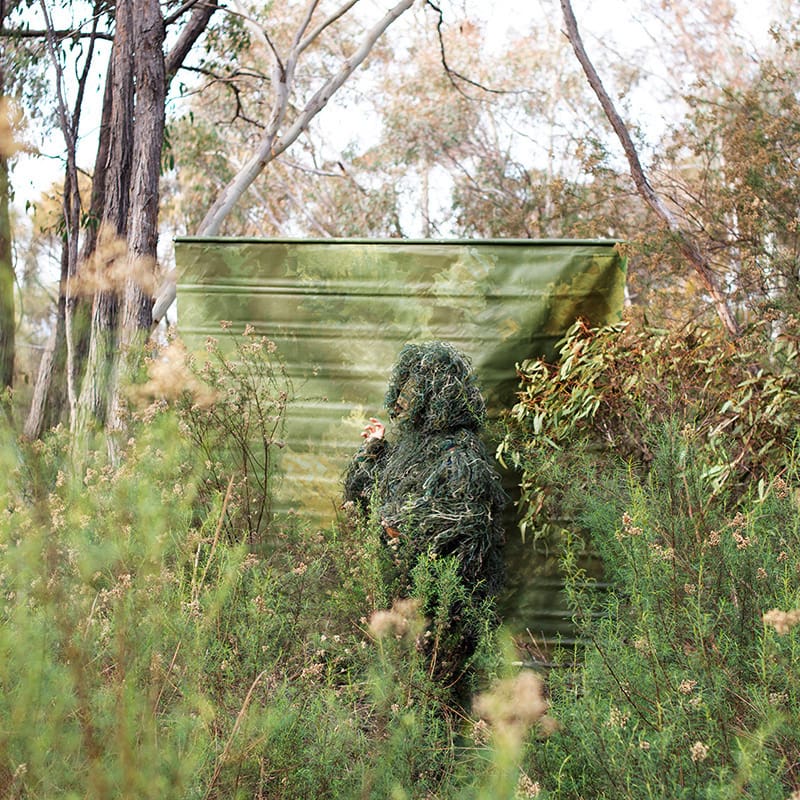
School: Media and Communication
Presentation: Third Milestone Review
Title: Post-Cinematic Remediation: Translations and Imbrications in 21st-Century Media
Abstract: The long take is a continuous shot of extended duration uninterrupted by a conventional cinematic cut. Reconsidering the long take in a contemporary post-cinematic context, this thesis develops the concept of the synthetic long take—a digitally constructed or composited long take which simulates but is not actually composed from a single unbroken camera take—and explores its relation to digital and post-cinematic media.
The thesis is structured into three parts. The first part approaches the synthetic long take in the context of post-millennial action cinema, engaging with visibly stitched oners and investigating their ‘seamfulness’ in light of the contemporary long take’s formal goal of seamlessness. The second part explores the use of synthetic long takes within durational desktop films which unfold in ostensibly real time on computer screens. The third part connects the synthetic long take to the Triple-A videogame, focusing on the recontextualisation and cinematisation of the virtual videogame camera, as well as its ability to bolster the prestige of popular franchises. Within each paradigm, I focus on examples operating at durational, aesthetic and technical extremes which reveal most distinctly their synthetic disposition; key case studies include Carter (2022), Unfriended (2015) and God of War (2018).
Together, these cases reveal transformations in the production and reception of long takes in contemporary audiovisual media. By theorising the operation of the synthetic long take within these three genres, the thesis identifies their unique status as long takes as well as the processes involved in their synthesis.
Image credit: Layered image of screenshots from the film Carter (2022)

School: Media and Communication
Presentation: Confirmation of Candidature
Title: The role of circular practices influencing consumers' attitudes, perceptions and behaviours regarding food waste.
Abstract: Food waste is a prevalent socio-environmental issue in the hospitality industry, undermining sustainability within this sector. It is crucial to advance the understanding of reducing food waste by adopting practices that prevent waste generation, such as circular practices. This research aims to analyse how circular practices can influence consumers' attitudes, perceptions, and behaviours regarding food waste in the hospitality sector. To accomplish this aim, the study will follow a quantitative methodology and employ online surveys to retrieve data from a global population to conduct data analysis. This research will adopt the integrated behaviour model to explore the current circular practices around consumers and study the influence circular practices have on consumers' attitudes, perceptions, and behaviour regarding food waste. Future results expect to add to the literature by providing insights into understanding consumer food waste in hospitality contexts and determining the influence of circular practices. Future outcomes will provide actionable recommendations for practitioners and policymakers to promote sustainable behaviours within the hospitality sector; this can help the industry meet Sustainable Development Goal 12.3, relating to reducing food waste by half.
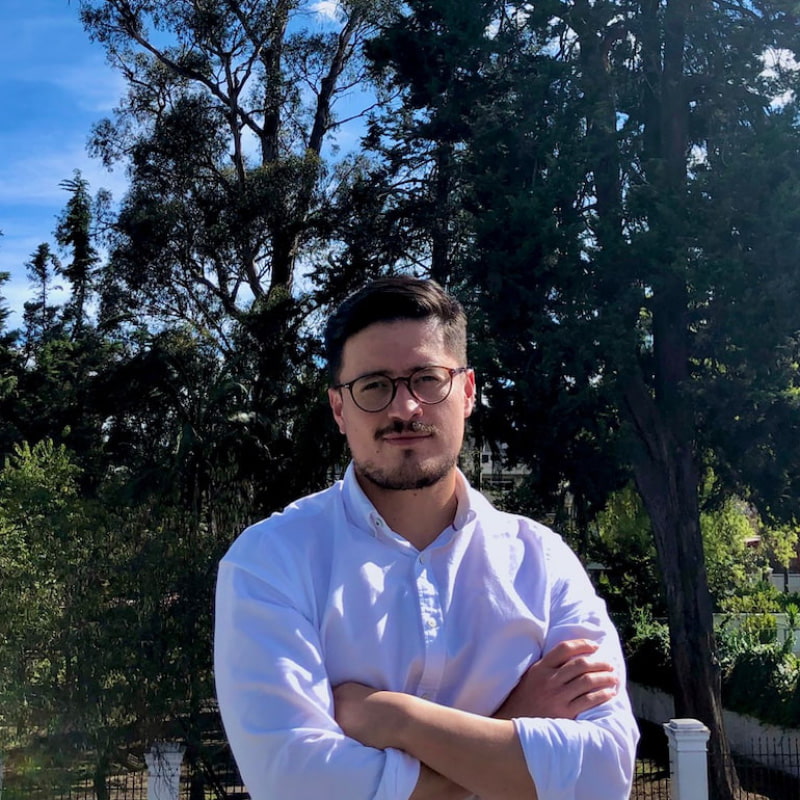
School: Media and Communication
Presentation: Media and Communication
Title: What is the creative process of exploding and reassembling a novel draft and what are the effects and consequences on the published novel?
Abstract: This study charts the creative process of how I exploded the draft of my third novel and reassembled it, through journal examples, writing experiments such as collaboration with visual designer Eva Harbridge, and engagement with both academic studies such as Ursula Le Guin’s Carrier Bag theory and Paul Klee’s design theory and novels including Michael Christie’s Greenwood (2019) Jennifer Egan’s The Candy House (2022) and Anthony Doerr’s Cloud Cuckoo Land (2021).
It explores how the ‘explosion’ – the pulling apart of an existing historical fiction draft - and consequent reassembly and restructure into six linked narratives spanning 250 years, allowed me to create connections between the themes of kinship, progress, potential histories and unionism, the separate narrative strands following women workers, a river and an AI chatbot, and ultimately create new meaning about the unintended consequences of actions and ideas.
The beginning of my doctoral study coincided with the explosion and the subsequent writing, editing and publication of the novel gives me a unique position to trace the development and aftermath of this process and contribute new knowledge in novel-writing studies and creative practice research. Analysing how readers and critics responded to the novel shows how the desired effect: to create a single and satisfying throughline through a fragmented narrative while making connections between ideas, was achieved.
The creative component of the project is my novel, The Hummingbird Effect (Scribner, August 2023).
Image credit: The Hummingbird Effect by Kate Mildenhall
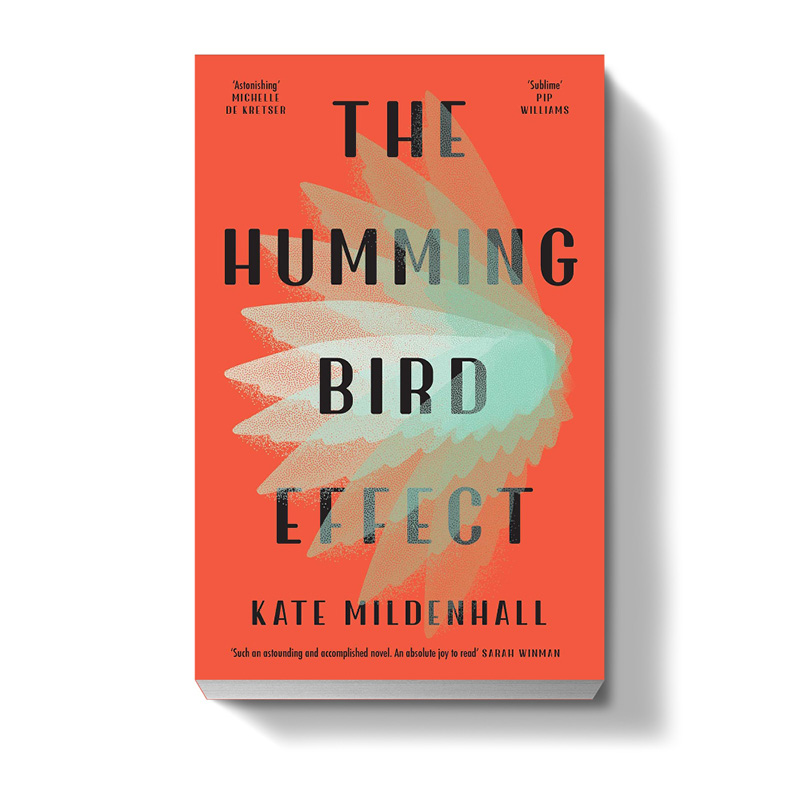
School: Media and Communication
Presentation: Second Milestone Review
Title: Understanding Australian Professional Wrestling, Past and Present, through Fan-Made Documentary
Abstract: This research will investigate the value of autoethnographic techniques in documentary for enhancing our understanding of the local wrestling scene in Melbourne, Australia. Utilising interviews, participant observation and archival footage, this research will document the experiences of wrestlers and wrestling fans through both historical and contemporary perspectives. In addition, this research will be conducted from the unique position of a wrestling fan, filmmaker and academic, allowing for exploration of the intersection of these identities and their influence on the shape of the film. This research also hopes to further the academic discussion on Australian professional wrestling through evaluation of various sociological interpretations of the cultural significance of this underrepresented subculture, including the role of performativity, the wrestling scene as an ‘archival community’, and the application of theology and mythology to wrestling archetypes.
Image credit: © tiero - stock.adobe.com

School: Media and Communication
Presentation: Confirmation of Candidature
Title: The Influence of Advertising on Consumers' Purchasing Behaviours Towards Ugly Food for Food Waste Reduction
Abstract: Marketers and advertising agencies are required to have a thorough understanding of their customers. Understanding customers' attitudes may lead to successful advertising campaigns and marketing strategies that effectively influence consumers' opinions about purchasing particular products. The aim of this study is to explore how advertising may be used to shape consumer attitudes and behaviours to combat the issue of food waste related to ugly food. According to Shao et al. (2020), the term "ugly food" refers to vegetables and fruits with unusual shapes, colours, or sizes that are often discarded, resulting in a substantial quantity of food waste. This research consists of two key phases: first, a comprehensive literature review examining the potential influence of advertising on reducing ugly food waste. The second phase involves administering an online questionnaire to households, focusing on their perceptions of ugly food. The outcomes of these stages promise to provide valuable insights for the marketing and advertising industry, offering a deeper understanding of target audiences and their responsiveness to advertising strategies in the context of food waste reduction. This study will integrate the Hierarchy of Effects model and the Theory of Planned Behaviour, aiming to offer a more in-depth insight into how consumers progress through the decision-making process and what factors influence their intentions and behaviours at each stage.
Image credit: Zakiroff - stock.adobe.com

School: Property, Construction and Project Management
Presentation: Confirmation of Candidature
Title: A multi-criteria decision-making framework for IoT based scheduling and monitoring in Construction Projects
Abstract: Over the last few decades, the use of new technologies, software, and automation has significantly grown. Despite an increase in Internet of Things (IoT) use in various industries, adoption of IoT across the construction industry remains in early stages. It is hypothesized that IoT can support scheduling and progress monitoring thereby being beneficial in the construction industry, where timely project completion is one of the big challenges that greatly impacts project success. A review of literature on IoT applications and challenges revealed that IoT can bring benefits to construction projects, but also showed that there is a research gap in considering the effect of IoT on scheduling and monitoring for construction. At the same time, a decision-making framework is required to help project managers select IoT technology that enhances the scheduling and monitoring procedures while being cost efficient.
This research aims to provide a decision-making framework for IoT application in scheduling and monitoring for construction management. The research will use a mixed methodology with qualitative and quantitative approaches. The first stage includes the identification of applications and challenges of IoT in scheduling and monitoring. In the second stage, the findings of stage one will be used in a new Multi-Criteria Decision-Making (MCDM) method to determine the relative importance of the factors affecting IoT application in construction. In the third stage, a decision-making framework will be built, based on the outcome of the second stage, to support project managers in the selection of IoT technology for enhancing scheduling and monitoring.
School: Property, Construction and Project Management
Presentation: Confirmation of Candidature
Title: Modelling and prediction of indoor air quality in school classrooms
Abstract: In the context of climate change and the COVID-19 pandemic, indoor air pollution (IAP) is gaining significant attention. Schools are crucial public buildings, characterized by high population density and vulnerability of children. Exposure to poor air quality can adversely affect academic performance and pose short- and long-term health risks to young students and staff.
Predictive modelling is a pivotal approach for improving indoor air quality (IAQ). It utilizes historical monitoring data to provide the future patterns of pollutant concentration, and consequently take measures in advance to mitigate peak pollution events. However, IAQ predictive models often ignore specific IAP and their influencing factors, especially the density of occupants and activities in classrooms. Furthermore, the lack of monitoring data on IAQ limits the applicability of existing models.
The proposed research aims to address this gap by conducting field monitoring and surveys in four schools. It will investigate IAQ in classrooms and develop predictive models based on the collected data, focusing on quantifying the impact of various factors on IAQ future patterns. An innovative predictive framework based on transfer learning is proposed with the expectation of achieving higher accuracy and generalizability than other prediction models.
This study will contribute to the improvement of IAQ in schools, ultimately benefiting the well-being and performance of students. In addition, the research results could provide a reference for policymakers to develop guidelines for improving the air quality in schools and ensure healthier learning environments.
Image credit: © Deemerwha Studio - stock.adobe.com

School: Media and Communication
Presentation: Third Milestone Review
Title: Playing with grief: a trans subjectivity attentive to potential affects of breath-time in the poetic elegy
Abstract: The Poppies I Was Speaking Of is a manuscript of long-form lyric poetry comprising of six elegies. This creative project and my accompanying exegetical project consider how poetry might engage with affective techniques of breath and time in relationship to themes of grief. In my exegesis I approach this question through and with a feminist/queer/trans poetic methodology and by reflecting on and experimenting with poetic methods and reading practices as expressions of my creative practice research. My exegetical research is interested in how fellow poets in my community of practice as well as theorists and philosophers have approached these questions poetically, through both creative and critical knowledges, processes, and research. The Poppies I Was Speaking Of seeks to engage with the affective captures/ qualities of poetic techniques such as playing with voice and rhythm, the spatial and optic possibilities of the poem, and narrative temporalities, and what these might suggest about grief and grieving processes. Both my creative project and exegesis are attentive to the possible implications of asking these questions and what their asking might suggest or allow the work to be in conversation with. This research suggests that its interlocutors are other poets, those who do creative practice research, feminist/queer/trans theorists, and affect theorists who engage with relationality as a potential political, philosophical, and creative practice and project.
Image credit: Olga Zarytska - stock.adobe.com

School: Education
Presentation: Confirmation of Candidature
Title: Studying Son Preference in China’s Rural Areas: A Feminist Perspective
Abstract: This research explores gender inequality in rural areas based on feminist theory, analysing the son preference phenomenon and investigating women’s reproductive rights and choices, women’s status and intergenerational ideology around gendered reproductive choices. This research therefore attempts to bridge the gap in feminist research in rural areas of China. The rapid development of the economy and society in China has not changed traditional values, and gender discrimination with a highly unbalanced Sex Birth Ratio of 111.3 which demonstrates that son preference remains severe in contemporary society, especially in the undeveloped rural areas. I begin this thesis by reviewing the previous literature on cultural factors, economic factors, birth policy and women’s status of son preference to picture the causes of gender discrimination. Under the guidance of feminist methodology and interpretive methodology, this research uses the in-depth semi-structured interview method to collect the data of 16 female participants in Liulin County and uses thematic analysis to interpret the data and capture the theme of women’s reproductive choices and behaviours. This research focuses on the ignored women’s voices and offers rural women an opportunity to express their views on women’s reproductive choices and behaviour, and calls for more attention to these female groups to improve their social status.

School: Education
Presentation: Confirmation of Candidature
Title: Screening Single-Sex Education: Representing the Formation of Girls Gender and Sexual Identities in Cinema
Abstract: All-girls schools can be framed as progressive, liberatory spaces where young women find temporary relief from a male dominated world and reach new heights of academic success. Contrastingly, they can represent the institutional reification of biological essentialist beliefs about boys and girls which render them so fundamentally different they require separate education. These vast differences in the conceptualisation of gender in all-girls schools is indicative of the limited research into the social implications of single-sex education, despite the gendered social structure ultimately characterising these institutions. Conceptualisations of gender in all-girls schools are further complicated when one considers the existence of LGBTQIA+ students and teachers.
My research will investigate this issue by examining the relationship between lived experiences of queerness at all-girls secondary schools and its representation in film. I will employ semi-structured interviews and textual analysis of film to explore the complex interplay between gender, queerness, education, film, and the dominant cultural narratives these feed into. Taking a queer feminist lens to this line of enquiry will foreground the voices of LGBTQIA+ women and challenge the ways heterosexist, patriarchal ideas are embedded into formal and informal places of learning.
Image credit: Dtiberio - stock.adobe.com

School: Education
Presentation: Confirmation of Candidature
Title: Instructional leadership and its influence on higher secondary school teachers in Thimphu, Bhutan
Abstract: Global studies have shown that Instructional leadership (IL) plays a crucial role in enhancing teachers’ practices. IL is a relatively new leadership model that is supported by the Ministry of Education (MoE) in Bhutan. It is deemed as a key driver to augment teachers’ practices.
This study aims to investigate 1) IL practices of school leaders, 2) factors that influence IL practices, and 3) impact of IL on teachers’ practices.
A mixed-methods with convergent parallel design is adopted for the proposed study. The Principal Instructional Management Rating Scale (PIMRS) will be utilised to survey a sample of 342 teachers and 71 school leaders from the higher secondary school (HSS) in Bhutan. Focus group discussions will also be conducted with 3 school leaders, 50 teachers, and 9 leaders from the MoE (Bhutan). Descriptive statistics will be conducted along with thematic analysis to reveal possible insights.
The findings of this study have the potential to strengthen the IL practices of school leaders and teachers’ practices. It will be a pioneering attempt to understand IL practices and its influence on teachers’ practices in Bhutan. It will provide foundational evidence for the development of an IL model in the context of Bhutan to improve teaching and learning.
School: Property, Construction and Project Management
Presentation: Confirmation of Candidature
Title: Projects to create the future: quality as a pivotal entry variable in planning projects in international development co-operation
Abstract: Planned functionally, international development (ID) projects have the capacity to improve lives and be socioeconomically transformative. These projects thus sit in the upper echelons of the modalities of facilitating development in the Third World. However, the ID body of knowledge argues that most ID projects fail. Yet, they continue to be the dominant means of promoting and attaining development in the Third World. This has led to an apparent paradox of “investment-in-failure” and remains a difficult conundrum for project management in ID. Notwithstanding the difficulties, ample rich evidence points the problem to the outset of these projects where they are designed to suggest seeds of failure are planted into their systems during the planning process. This suggests issues with the planning quality of these projects. Further, it singles out the heretofore overlooked quality-at-entry (QAE) concept and puts it into perspective as a useful tool for embedding requisite quality into the ID project design. Yet, QAE still remains ambiguous, which has hampered its operationalisation and leverage for early-stage quality assurance in these projects. This research inquiry thus seeks to, employing a systems thinking approach, rethink and conceptualise QAE into a cohesive and holistic framework to generate robust, relevant and timely evidence to extend knowledge on early-stage quality thinking and assurance in ID project management literature; and facilitate development of appropriate quality proxies to enhance strategic performance of ID projects.
Image credit: Riccardo Niels Mayer - stock.adobe.com
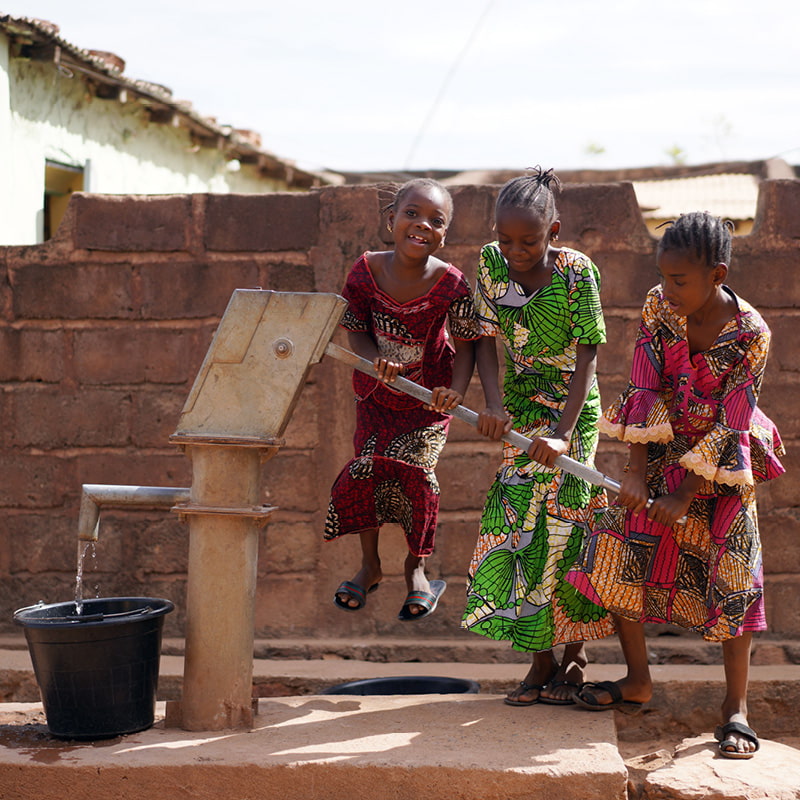
School: Education
Presentation: Confirmation of Candidature
Title: Mathematics teachers’ reflective practices in Bhutanese secondary schools.
Abstract: The global shift in mathematics education from the traditional-transmission-model to the contemporary-constructivist-model has challenged teachers’ beliefs and practices. Bhutan initiated Western style mathematics curriculum reforms and conducted professional development for teachers to align intended and enacted curriculums. Mathematics has remained one of the poorest performing subjects in Bhutan. Mathematics teachers’ beliefs have impacted on their teaching. Reflective practice in the mathematics classroom has led to improvement in student learning. Thus, main aims of this study are to examine the Bhutanese secondary mathematics teachers’ beliefs about mathematics, mathematics education and reflective practices; investigate their use of reflective practice in the classroom; and to study the effect of professional development on their practices. Case study design will enable in-depth exploration of mathematics teachers’ reflection before, during and after the lesson in four case schools. The data will be gathered through survey, semi-structured interviews with teachers and lesson observations. Analysis will use both qualitative and quantitative methods and the analysis of classroom data will be done using the semiotic analysis of sociocultural theory. The findings will contribute to the literature on mathematics teachers’ reflective practice and will contribute to professional learning for mathematics teachers in Bhutan enabling them to enact the new curriculum.
School: Media and Communication
Presentation: Confirmation of Candidature
Title: Writing (with) the girl: self-writing, genre, and extended girlhood.
Abstract: Recent literary and screen culture reflects the move toward extended girlhood, which sees the characteristics of feminine adolescence extend beyond the confines of youth and into adulthood. More and more we’re seeing examples of twenty- and thirty-something women through the lens of girlhood; we’re using the terminology and frameworks of ‘coming of age’ to describe adults.To what extent does this cultural narrative feed into personal experience?
This creative practice project takes an autoethnographic approach to self-writing and girlhood. It explores extended girlhood as both a cultural trope and a lived experience, and crucially, how these things interact. I look to screen texts like Girls (2012-17), Frances Ha (2014), Appropriate Behaviour (2014) and others texts belonging to this genre/era — which coincided with my early-twenties — to examine the frameworks and constructions of contemporary girlhood. This analysis will be mirrored in my creative practice: an iterative writing practice that experiments with writing (with) girlhood. This research is concerned with the intersection of personal and cultural narratives, and I use the journal as the site for this exploration. I revisit the journals I produced throughout my twenties and use them as the basis of new work — ‘reopening’ the text, entering into conversation with myself.
Placing my own experience and writing at the centre of this investigation, I explore the symbiotic relationship between genre and lived experience, considering the ways generic expectations might feed into how we anticipate, actualise, understand, and narrate our experiences.

School: Media and Communication
Presentation: Second Milestone Review
Title: WeChat's changing ecology: the case of Chinese international students in Melbourne
Abstract: In recent years, research on the Chinese ‘super-app’ WeChat has gradually moved from single functional studies to a focus on its infrastructure, or ecology research. WeChat’s ‘ecology’ is thought to be the result of its multifunctional merging capabilities (Montag, Becker & Gan 2015); its social media ecosystem can be effectively defined as an integrated platform (Chen, Mao & Qiu 2018). This PhD thesis will focus on the WeChat ecology in relation to Chinese students living in Australia. The study seeks to understand whether the WeChat ecosystem continues to play a significant role in the lives of these young user groups. More precisely, I will examine why Chinese students in Melbourne continue to use WeChat, as suggested by my preliminary inquiries, despite its strict censorship regime and all the other social media platforms available. I review the existing literature through four research areas, namely, (a) single function, (b) WeChat ecosystem, (c) user motivation, and (d) censorship. Finally, I outline my chosen use of qualitative research methods—survey, semi-structured interviews, and participant observation—which I will harness in order to answer the core research question. As its primary contribution, this research project seeks to highlight that WeChat’s functionality and user perspective form an interconnected ‘two-way bridge’

School: Media and Communication
Presentation: Confirmation of Candidature
Title: The Devil is in All of You: The Changing Face of Satan in Cinema
Abstract: In 1896 French cinema pioneer, Georges Méliès, released The Devil’s Castle. Now considered the first horror film made (NYFA 2022), The Devil’s Castle gave audiences giant bats, a medieval castle, bubbling cauldrons and Satan as an agent of mischief. Since then, Satan has been a mainstay in cinema, and in the twenty-first century Satan has often been subversively deployed as a symbol to comment on female bodily autonomy. This thesis illuminates how the symbol of Satan continues to move beyond religious ideologies and, via these cinematic representations, is becoming a force for feminist liberation in popular culture. While there are comprehensive scholarly studies around key influential films like Rosemary’s Baby (Polanski 1968) and The Witch (Eggers 2015) exploring Satan and female bodily autonomy (Valerius 2005) (Corcoran 2022), there is limited scholarly research on how Satan operates as a transgressive feminist force in contemporary cinema, with many of the films addressed in this thesis not addressed in extant research. Using an interdisciplinary approach, integrating textual analysis of key films and sociocultural research, this thesis will explore horror films ranging from the 1960s – 2020 that hold Satan as a key figure in relation to female puberty, sexual and patriarchal repression, pregnancy and menopause. It will consider how socio-cultural tensions and social changes impact the way viewers read the presence of Satan onscreen. Finally, this thesis will argue that Satan is not simply a binary symbol of good vs evil, but a catalyst of change and a feminist symbol in modern horror.
Image credit: © simikov - stock.adobe.com

School: Global, Urban and Social Studies
Presentation: Confirmation of Candidature
Title: First Nations women's experiences of technology-facilitated abuse in family violence settings: help-seeking and support
Abstract: First Nations women are powerful, resilient and leaders within their communities. I believe we know what is needed to better address family violence in our communities. I believe our women will thrive when they are in control, being listened to and, given the space and capacity to create and manage the services and supports they ascertain as helpful.
I believe we hold the answers to the problems of family violence and more specifically, technology-facilitated abuse. My thesis and proposed research aim to create a platform to deeply listen to First Nations women’s experiences and views on solutions.
First Nations people have high levels of digital engagement, displaying their creativity, strength, and civic and community participation. In contrast to their high levels of digital participation, there is a general lack of awareness about technology-facilitated abuse. It is known that First Nations people experience technology-facilitated abuse at increase rates, suffering online hate and image-based abuse at more than double that of non-indigenous people. Despite the high incidence of technology-facilitated abuse, there is a paucity of research specifically addressing First Nations women’s experiences of technology-facilitated abuse and their help-seeking behaviours within the context of family violence.
The rationale and motivation underpinning this research is to champion the voices of First Nations women to ultimately produce much-needed knowledge that can inform policies and practices for preventing and responding to technology-facilitated abuse.
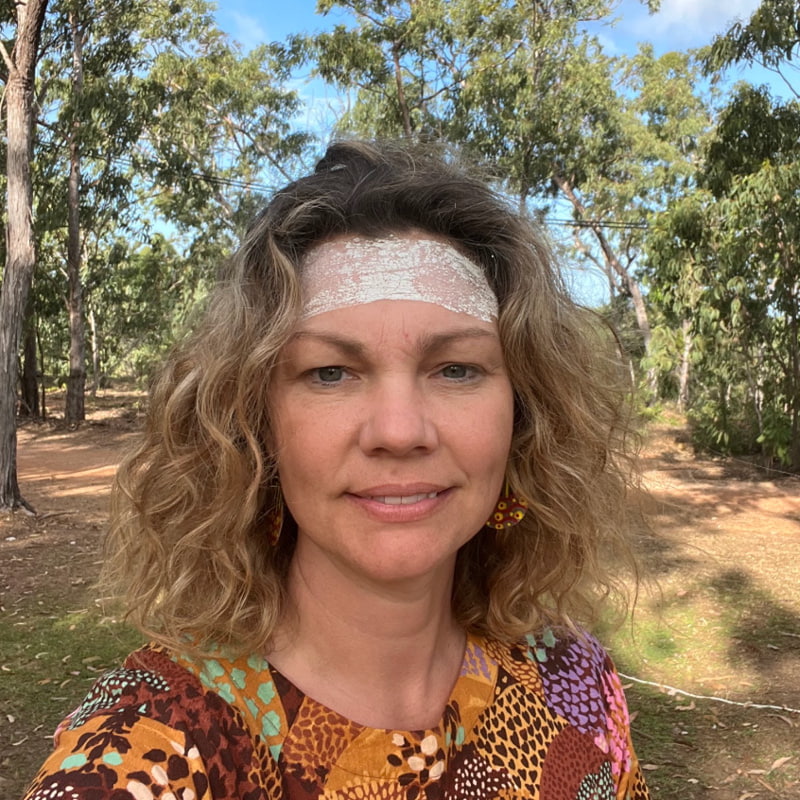
School: Global, Urban and Social Studies
Presentation: Confirmation of Candidature
Title: Beyond green facades: integrating ecology and architecture.
Abstract: Nature in the city or city in nature? The prevalent inclusion of nature in urban planning and design indicates we have moved past the initial phase of questioning the importance of nature in the city. In light of the Millennium Ecosystem Assessment's alarming conclusions that 60% of global ecosystems are either degraded or used unsustainably, we are faced with the challenge of moving beyond the 'any green will do' approach. The disjunction between ecology, which primarily operates on a landscape scale, and architecture, which focuses on form and aesthetics, presents many challenges in integration. Current attempts to embed biodiversity in building certification processes remain stifled by minimising threats, without pushing for what is needed— nature positive outcomes. This research aims to bridge this disciplinary gap and propose strategies to enhance this vital relationship.
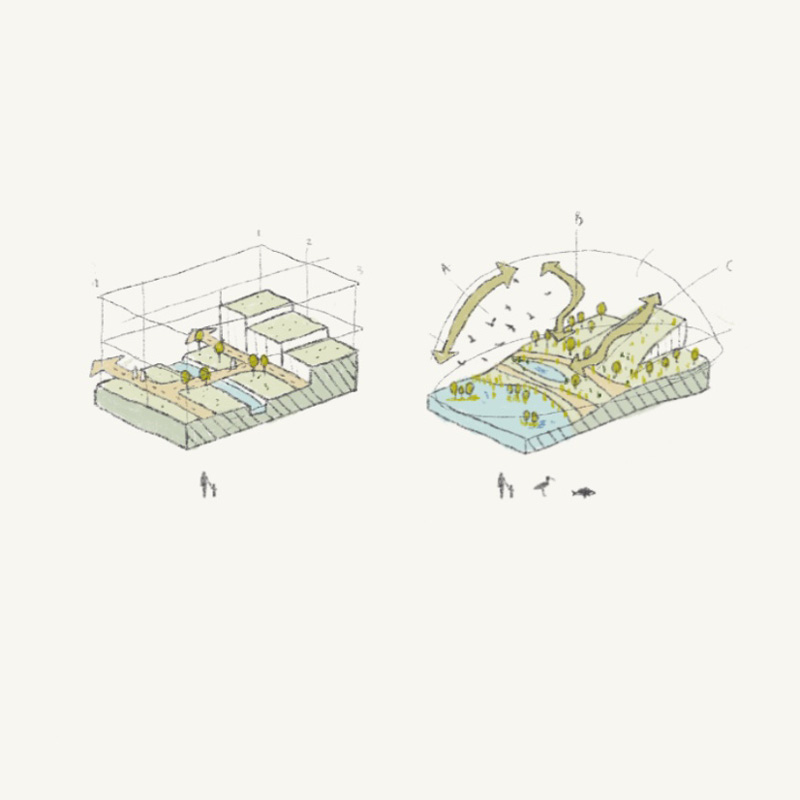
School: Media and Communication
Presentation: Second Milestone Review
Title: Djandak Wi (Country Fire): Victorian Traditional Owners and Digital Storytelling as Decolonising Practice
Abstract: TBA
School: Media and Communication
Presentation: Second Milestone Review
Title: Deleuze, deterritorialization and plot in novel writing
Abstract: Alongside Ronald Bogue, I would like to propose that the five elements of fabulation -becoming-other, experimenting on the real, ‘legending’, inventing a people to come, and deterritorializing language - provide a Deleuzian approach to the worlds of narrative fiction. Where Bogue sees his entrance to writing about Deleuze and the narrative aspect of literature through a Deleuzian approach to history and time as theorised by Jay Lampert in Deleuze and Guattari’s Philosophy of History (2006), I will instead focus specifically on instantiations of the concept of the deterritorialization of language within long form narrative fiction. I will conduct this research both in the writing of my own novel; The Peace Movement, and through the textual analysis of two others; The Story of O by Anne Desclos, and Lady Chatterley's Lover by D.H. Lawrence. How does the deterritorialization of language operate in these texts, and what is its relationship to narrative? Simultaneously, how might approaching the deterritorialization of language as a method constitute or transform the narrative aspects of my own work of long form narrative fiction? In what ways do these deterritorializations contribute to the notion of literature as a medium that speaks collectively in a minoritorian mode to conduct a reevaluation of values, and to create a people to come?
Image credit: © kastanka - stock.adobe.com

School: Global, Urban and Social Studies
Presentation: Confirmation of Candidature
Title: Documenting Victorian Women and Gender-Diverse Aboriginal and Torres Strait Islander’s Lived Experiences of Image-based Sexual Abuse
Abstract: Image-based sexual abuse (IBSA) can be defined as intimate images taken or created of you without your consent; intimate images of you shared without your consent; and/or threats to take or share your intimate images without your consent (Henry et al., 2019). Aboriginal and Torres Strait Islander women and LGBTQIA+ people are the populations most affected, compared to men, heterosexual people, and non-indigenous Australians (Henry et al., 2017; Henry et al., 2019; Henry et al., 2021; McGlynn et al., 2021). A paucity of research has been undertaken with Aboriginal victim-survivors focusing on technology-facilitated abuse (Office of the eSafety Commissioner, 2021), social media engagement (Kennedy, 2020), and dating apps (Carlson & Day, 2022), however, to date, and to my knowledge, there has been no qualitative research undertaken exploring lived experiences and impacts of IBSA in Indigenous communities. My research focuses on Aboriginal and Torres Strait Islander women and Aboriginal and Torres Strait Islander gender diverse people’s lived experiences of IBSA through Aboriginal Participatory Action Research (APAR), which involves Aboriginal researchers and participants collaborating to bring about social change (Dudgeon et al., 2020). This project encompasses one-on-one interviews with victim-survivors and key stakeholders; yarning circles with victim-survivors; and a stakeholder focus group. This project aims to understand Aboriginal and Torres Strait Islander women and Aboriginal and Torres Strait Islander gender-diverse people’s lived experiences of IBSA, including interpersonal impacts, reporting and/or disclosure, as well as effectiveness of mainstream and Indigenous-led support services in responding to reports and/or disclosures of IBSA from Indigenous victim/survivors.

School: Property, Construction and Project Management
Presentation: Confirmation of Candidature
Title: Energy flexibility for water corporations
Abstract: In dealing with the challenges of the electricity supply-demand imbalance posed by the increasing intermittent renewable energy penetration, demand response (DR) has been globally recognised as an effective technique to maintain the reliability of the electricity grid. For example, the Australian National Electricity Market (NEM) runs many DR initiatives (such as Ancillary Services and Wholesale Demand Response) and dynamic energy price schemes to incentivize high demand energy users to provide DR services, maintaining the security and stability of the power system. Water utilities, as a high-demand industry, consume significant amounts of electricity every year to deliver unintermittent water services to populations, which results in significant energy costs and carbon emissions. In the ongoing renewable energy transition, they need to use energy differently to adapt to today’s more dynamic power system/energy market. Based on existing knowledge, water utilities have great potential to shift/curtail their flexible electric loads to participate in DR events. Besides, they can also incorporate their on-site generation (such as digested biogas, hydropower, and solar power) with DERs in local energy communities through P2P energy trading to further enhance the energy flexibility and efficiency. Therefore, this PhD study aims to develop a comprehensive machine learning-based decision-making tool to help water utilities and other high-demand users with similar infrastructure set-ups to identify optimal load/energy management strategies at operational levels that reduce electricity costs, improve energy flexibility and efficiency, and contribute to the grid stability.

School: Media and Communication
Presentation: Confirmation of Candidature
Title: How Australian Netflix and Stan ‘Original’ Films Relate to/Reconfigure/Recontextualise the Industrial, Cultural, and Aesthetic Paradigms of Australian National Cinema
Abstract: This thesis examines how “Australian national cinema” is culturally and industrially defined in the subscription video on-demand (SVOD) age. Ryan and Goldsmith (2017) suggest 21st-century screen studies has shifted from its key foundations evaluating and theorising national cinema paradigms in favour of less totalising projects, or those which span beyond national borders, sometimes negating the national altogether (4). This can be related partly to the disciplinary move towards studies of streaming services, which combine internet and digital culture studies with extant screen studies traditions, to date rarely focusing on how the ‘national’ is constituted. This dearth of nationally-focused film research is contrasted with a noticeably greater tendency for scholarship to cover SVOD original TV productions (e.g., Potter 2020; Scarlata et al. 2021; Baker et al. 2023).
This thesis responds to a lack of research around how “Australian national cinema” is constructed on SVODs. It aims to situate national cinema within SVOD discourse by comparatively examining the strategies, aesthetics, and positioning of ‘Australian’ films on U.S.-based global platform Netflix, and local platform Stan. Referencing traditional Australian cinema theory and associated textual/genre analysis methods, national Original SVOD texts will be evaluated to gauge what these platforms qualify as Australian cinema. The project will thus provide a clearer understanding of contemporary Australian expression via film aesthetics and branding in the streaming era and highlight if local content intentions differ between local and global providers.

School: Media and Communication
Presentation: Third Milestone Review
Title: Automated decision-making, social services and youth homelessness
Abstract: As social services in Australia become increasingly digitised and automated, this entails important consequences for people experiencing disadvantage. While opportunities exist around automated forms of welfare and social services to increase efficiency, predict need, allocate resources and communicate with welfare recipients, they also entail significant risks for the most vulnerable. These include surveillance, control, exclusion and discrimination, which preclude service access and compound disadvantage.
My PhD is investigating automated decision-making (ADM) in Australian social services and the impact of this on young people at risk of and experiencing homelessness. Through creative focus groups and interviews with young people and care workers, I have explored the extent to which ADM enables or hinders the agency of young homeless people as they attempt to access social services and social security. I have also investigated these themes from the viewpoint of care workers, who assist young people through the process of applying for social services. Amartya Sen and Martha Nussbaum’s Capability Approach theory has guided and framed my thematic analysis.
This milestone presentation will present a summary of findings from three drafted evidence chapters. These chapters examine the implications of automated social services for the care, trust, and emotions experienced by young people, and the ultimate flow-on effects of these impacts on homelessness outcomes.
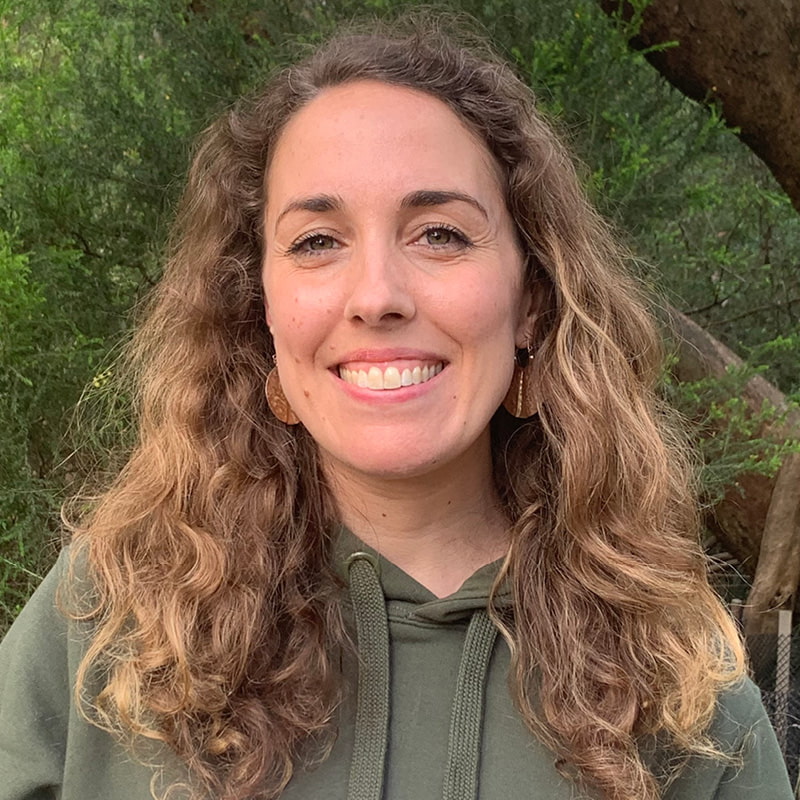
School: Media and Communication
Presentation: Second Milestone Review
Title: Pelagic, Chthonic, Metabolic: Writing Body and (Ex)change
Abstract: Illness often comes as a surprise to the sufferer, and creative nonfiction is replete with examples of illness altering how the subject perceives themselves and their place in the world. In this creative practice research project, I am interested in moving beyond a personal grappling with illness to explore what else the rupture that it produces can reveal about the interdependent self, in the ‘after’ of the acute episode, in the changed state of ‘normal’. Where does first-person writing trying to reach beyond the self lead? And what are the impacts of this attempt for the writing and thinking subject?
I adopt a metabolic framework in this text – examining illness as not a history of a specific object, but of relationships and systems. ‘Metabolic history is not (directly) about the poles of reproduction or Death but the axis of eating and growing of somatic life that connects them.’ (Landecker 2019: 542) To move towards a metabolic understanding is to write into permeability as a condition of life at every level, as interdependence between human and nonhuman others. (Dahiya 2020)
This is done by exploring the relationship of a (specific) body to food, medicine and capitalism. The metabolic imaginary is a way of articulating change through and with what is external. Writing creatively using this framework illuminates the social and historical constitution of illness and expands what is considered ‘normal’. (Canguilhem 1991)
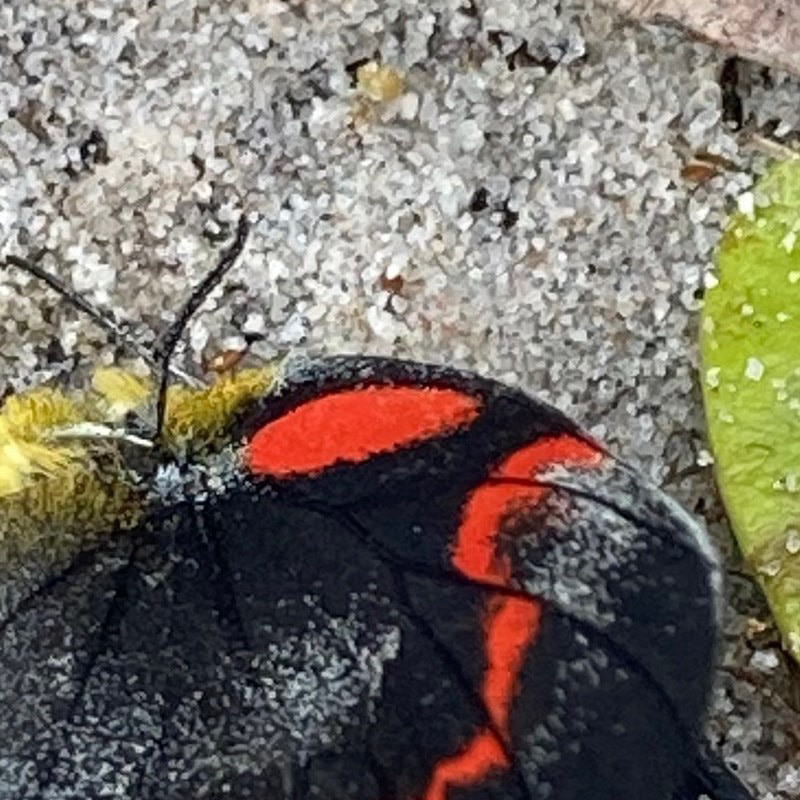
School: Global, Urban and Social Studies
Presentation: Third Milestone Review
Title: The Racial Logics of Molwa Law*: Yorta Yorta v The State of Victoria
*White Man Law
Abstract: Since 1788, the settler-colonial nation of Australia has continuously legitimised its possession of First Nations countries through its laws and legal institutions. Colonial rule and the formation of Australia was, and continues to be, based on the racialisation of First Nations people and colonial assumptions of racial superiority. I argue that these logics continue to permeate throughout Australia’s legal institutions, even though racial discrimination is seen as abhorrent and aberrational by most Australians.
This research analyses one of the first native title cases decided after the historic Mabo judgment, Members of the Yorta Yorta Aboriginal Community v The State of Victoria & Ors (1998) FCA 1606. The aim of the research is to demonstrate how race operated ideologically and discursively throughout the Yorta Yorta case to justify the ‘legal’ dispossession of Yorta Yorta people. In this research, I undertake a critical discourse analysis of the Yorta Yorta trial transcripts within a theoretical framework of patriarchal white sovereignty (Moreton-Robinson, 2004, 2015), critical race theory and critical whiteness studies, to examine how racial logics influenced the trial and its outcome.
From my standpoint as a Yorta Yorta woman, I explore how the colonial law operates to dispossess and erase First Nations people, while simultaneously obscuring its own role in the process. In this sense, the Yorta Yorta case can be read as part of the ongoing colonisation of First Nations land, through a jurisdiction which purports to deliver land justice to First Nations people.
Image credit: Photo of a campfire on Yorta Yorta country
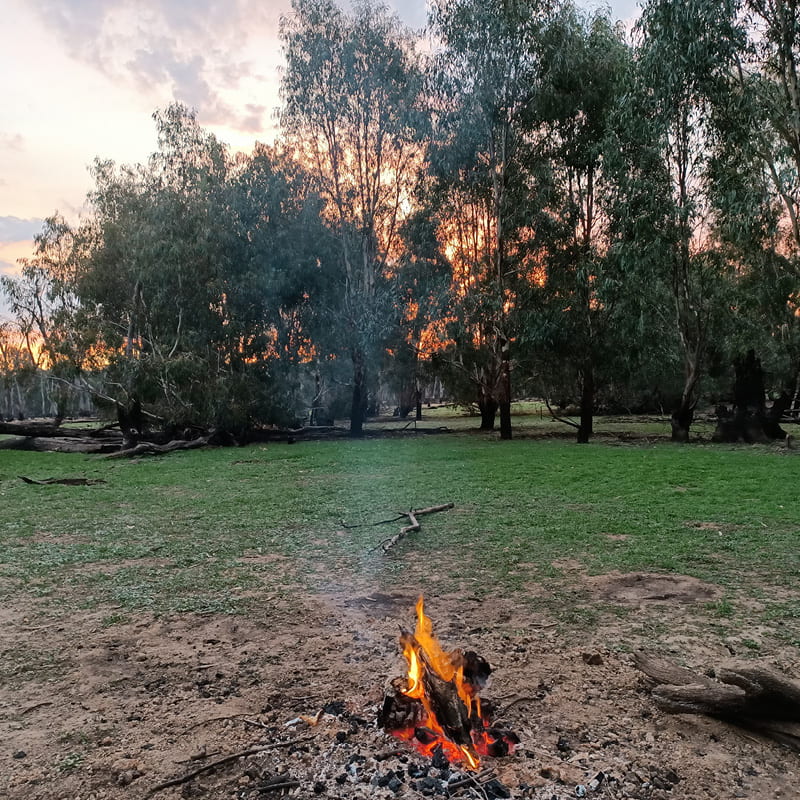
School: Global, Urban and Social Studies
Presentation: Third Milestone Review
Title: Conceptualising, Mapping and Analysing the Social-Ecological Value of Informal Green Spaces
Abstract: Informal green spaces (IGS) are the green spaces that exist as the unintended by-product of the formal forces shaping the urban environment. They are the overlooked and undervalued green spaces in our cities, and include land-uses such as vacant lots, abandoned sites, street verges, and utility easements. Despite the ambivalence and, at times, contempt shown for these spaces, IGS provide a potentially important and underutilised urban green space resource. This research project looks to integrate these historically maligned spaces to better understand their social and ecological value in the urban environment. I do this by identifying IGS conceptually, mapping them spatially at the landscape scale, and analysing their role in providing habitat for non-human urban populations and providing a space for humans to interact with nature. Finally, I synthesis the knowledge developed through the thesis and conclude with a discussion on the potential ways governance and land use planning may better respond to these spaces for the benefit of human and non-human urban populations.
Image credit: © Matthieu - stock.adobe.com

School: Property, Construction and Project Management
Presentation: Third Milestone Review
Title: Circular Business Model for End-of-life Electric Vehicle Lithium Batteries in Australia
Abstract:Globally, there has been an increase in the deployment of lithium batteries (LiB) in electric vehicles (EV). However, as the dependence of EVs continue to increase, a large volume of EV LiBs are expected to reach end-of-life (EOL) in the coming years. The circular economy (CE) approach has been proposed for EOL EV LiBs. Circular business model (CBM) acts as an important tool for businesses to transition into CE that provide value for relevant stakeholders. The literature focuses either on ‘recycling’ or ‘repurposing’, mostly emerging from a European context with a lack of focus or awareness on CBM for EOL EV LiBs.
This research adopts a qualitative approach to examine the research problem from stakeholders’ perspective. Hence, the research aims to identify key factors to develop a CBM for EOL EV LiBs in Australia. Semi-structured interviews from five distinct relevant stakeholder groups were thematically analysed using an inductive based approach. In summary, our findings show that themes emerging as barriers for developing a CBM are unique to the Australian context. This is largely due to the ‘dependence on EU’ and a ‘lack of an established regulatory policy’ unlike the EU battery directive. Development of procurement policies, government-initiated pilots, collaboration, and the knowledge on ‘how to be involved in CE initiatives’ are among the identified key factors. The research concludes by providing key recommendations on how to increase regulatory and industrial capabilities that could potentially overcome any complexities that arise for developing a CBM for EOL EV LiBs in Australia.

Acknowledgement of Country
RMIT University acknowledges the people of the Woi wurrung and Boon wurrung language groups of the eastern Kulin Nation on whose unceded lands we conduct the business of the University. RMIT University respectfully acknowledges their Ancestors and Elders, past and present. RMIT also acknowledges the Traditional Custodians and their Ancestors of the lands and waters across Australia where we conduct our business - Artwork 'Luwaytini' by Mark Cleaver, Palawa.
Acknowledgement of Country
RMIT University acknowledges the people of the Woi wurrung and Boon wurrung language groups of the eastern Kulin Nation on whose unceded lands we conduct the business of the University. RMIT University respectfully acknowledges their Ancestors and Elders, past and present. RMIT also acknowledges the Traditional Custodians and their Ancestors of the lands and waters across Australia where we conduct our business.